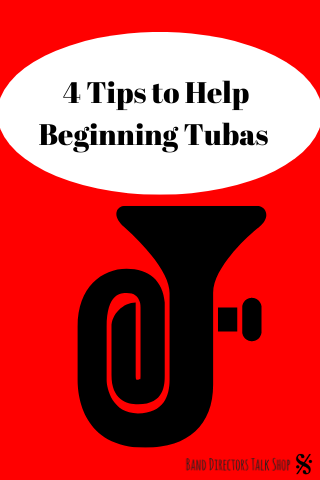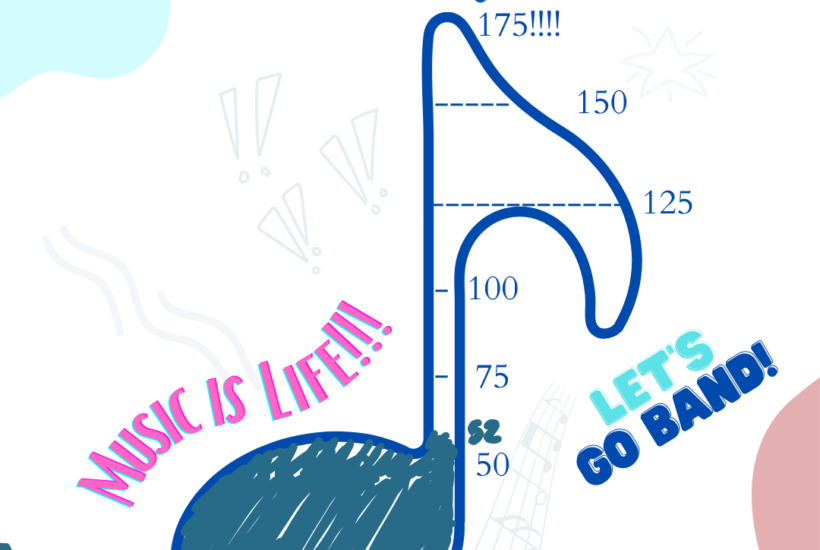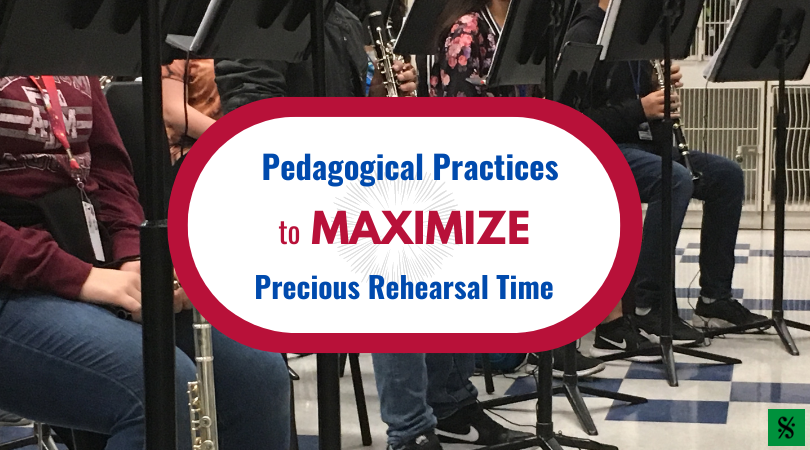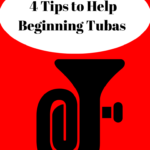Beginner tuba class can be one of the most challenging endeavors for both the teacher and students. For a student in middle school, this mammoth of an instrument can pose many challenges from both a physical and musical perspective. This article provide 4 quick tips that can help aid tuba players in proper development during that first year of beginning band.

1. Holding the instrument
The number one challenge I encounter with young tuba students is simply finding a proper way to sit and hold the instrument at the same time. Because tubas come in all shapes and sizes, as do beginning tuba students, every student really needs a customized position in which to hold the instrument when playing.
- Students must sit in the chair with great posture, sitting tall with their feet flat on the floor.
- The tuba needs to placed in the student’s lap while they maintain this great posture.
- The next step is where the customization comes into play depending on where the mouthpiece rests in relation to the student. Adjustments need to be made to the tuba position so that the mouthpiece will reach the lips without the student having to adjust their posture.
- If the mouthpiece is too low, a pillow or book could be used to raise the tuba.
- For a mouthpiece that is too high, the tuba can be adjusted by setting the tuba on the chair as long as the student doesn’t have to twist in the chair to make this happen. I have found the best way to correct a mouthpiece that is placed too high for the student is to use a tuba stand.
The end goal is the student should not have to reach, slouch, or twist to get their lips to the mouthpiece. Many students are not able to reach their full potential playing tuba simply because their sitting and holding position of the instrument are not optimal. (For more information on tuba posture and holding position, read this article.)
2. Breathing
Wind flow could possibly be the greatest aspect (or hindrance) that tubists need to master to play well. The airflow on tuba is quite different than any other brass instruments and should be taught as such. There needs to be massive amounts of wind crossing the lips without a lot of tension in the body or the center of the lips to get the best tuba sounds. Breathing for tuba is very different than what any beginner would have probably experienced before starting band. Exercises should be utilized to get the young tubist used to moving large quantities of wind in and out of their lungs. These exercises should be practiced regularly as wind usage is a skill that must be developed over time.
The other consideration with breathing for beginner tuba is that most of the students are still growing and therefore the lungs are not fully developed. This means lung capacity of young tubists will probably not be at the level needed to play the same phrases as higher brass instruments. It is best to allow them to breathe more often so they always move lots of wind. As the student grows the lung capacity will also grow solving this problem over time.
3. Embouchure/Tone Production
Tuba requires the largest lip vibrating surface of all the brass instruments. Because of this, the aperture for a tubist needs to be large enough to accommodate the vibrating surface. Playing with an overly tight embouchure on tuba can decrease the vibration surface area and diminish tone on the instrument.
- When starting beginning tubas, I try to get the student to think of an “Ohm” shape first and then anchor the muscles underneath the corners of the mouth against the teeth.
- After this, I have the student drop the jaw so to produce a good size aperture. A jumbo drinking straw can aid with this positioning.
This embouchure set up allows the lips to be flexible with a good vibrating surface. To aid in tone production on tuba, I have students think of an “Oh” shape every time they inhale or play the instrument. Remember embouchure and tone production are skills that must be developed over time and won’t happen overnight. Patience and persistence are needed to help students with this aspect of playing
4. Articulation
I find the key to great articulation on tuba is two-fold.
- First students must think of articulation like a singer would diction. Using vocal syllables is the best way to teach articulation. I want my tuba students to use a “tOH” syllable when tonguing. The vowel sound should be more prominent than the consonant to achieve the best tone and clarity.
- Secondly, once students are comfortable with speaking the syllable, I then have them apply this to wind patterns and finally to the instrument.
It is quite easy for a young tubist to get away with air attacks instead of using the tongue. Wind patterns will allow a teacher to diagnose if the articulation is correct. The most common issue that I come across dealing with poor articulation in young students is that the wind doesn’t keep flowing in-between notes. This can happen because the student doesn’t get the tongue down after the articulation.
Dr. Scott Roeder is Professor of Tuba and Euphonium at the University of Texas Rio Grande Valley where he teaches applied lessons and conducts the UTRGV Tuba/Euphonium Ensemble which will be performing at the 2017 US Army Band Workshop and TMEA State Music Convention. Dr. Roeder has performed as a soloist at universities and conferences around the country and in March 2017 will host the ITEA South Central Regional Tuba Euphonium Conference at UT Rio Grande Valley in Edinburg, TX.
If this article was helpful to you, please consider SHARING it on Facebook so others can learn as well!
Related Reading:
5 Things You Should Say to Your Band More Often
8 Ways to Get More From Your Lesson Staff This Year
How Using Lanyards Can Help You Listen to Every Student in Beginning Band
If you would like to receive our weekly newsletter, sign up here.
Don’t forget to like us on Facebook too!
Learn. Share. Inspire.
BandDirectorsTalkShop.com






Leave a Reply
You must be logged in to post a comment.